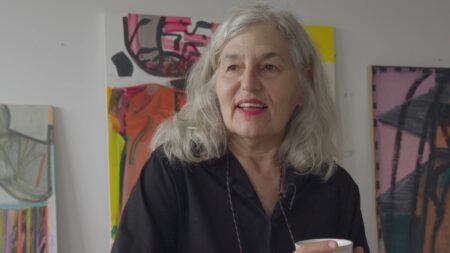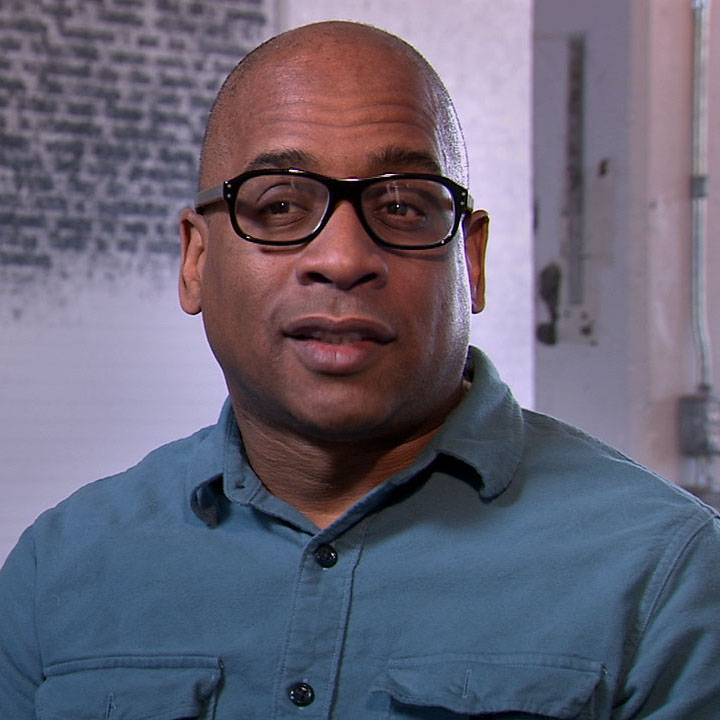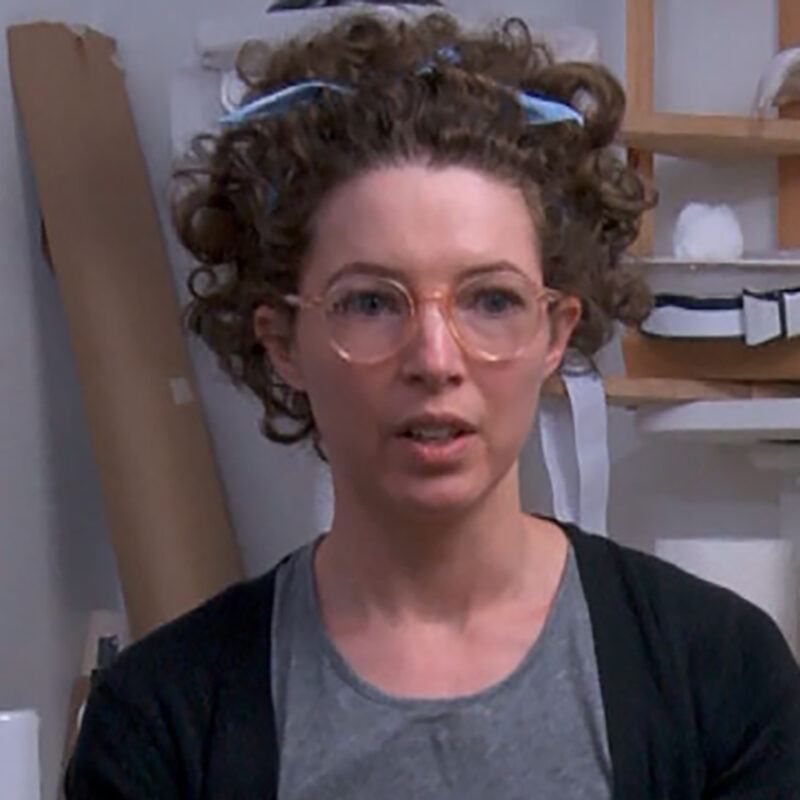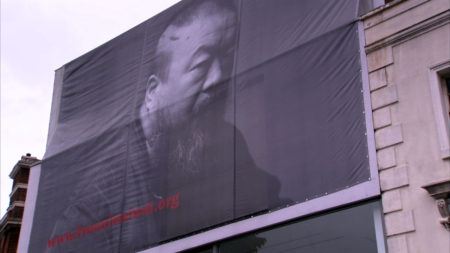Continue playing
(Time remaining: )
Play from beginning
Continue playing "{{ controller.videos[controller.getVideo(controller.currentVideo)].segmentParentTitle}}"
{{controller.videos[controller.getVideo(controller.currentVideo)].title}} has ended.
History
How do artists mine the past to explore the present? Why do some historical events shape the way we think today, and why have some been forgotten? In what ways do artists use their own histories to examine the human condition?
In this episode, artists play with historical events, explore and expose commonly held assumptions about historic ‘truth’, and create narratives based on personal experiences.
More information and creditsCredits
Series Created By: Susan Dowling & Susan Sollins. Executive Producer & Curator: Susan Sollins. Series Producer: Eve Moros Ortega. Associate Curator: Wesley Miller. Director of Production: Nick Ravich. Production Coordinator: Ian Forster. Consulting Director: Charles Atlas. Editor: Lizzie Donahue. Director of Photography: Paul Gibson & Joel Shapiro. Sound: Patrick Christensen, Judy Karp, Mark Mandler, & Roger Phenix. Gaffer: Alan Hostetter. Key Grip: Anthony Mussolino. Best Boy: Chris Caiati & Brian Sachson. Production Assistant: Steven Klink & Logan Needle. Makeup: Eddie Casson. Assistant Editor: Crystal De Boulet, Dahlia Fischbein, Bahron Thomas, & Alex Zustra.
Art Direction and Design: Open, New York. Online Editor: Don Wyllie. Composer: Peter Foley. Voiceover Artist: Jace Alexander. Sound Editor: Margaret Crimmins & Greg Smith. Sound Mix: Cory Melious. Sound Assistant: Steve Giammaria. Artwork Animation: Frank Ferrigno. Graphics Animation: Urosh Perishic.
Artworks Courtesy of: Marina Abramović; Glenn Ligon; Mary Reid Kelley; Fredericks & Freiser, New York; Pilar Corrias Gallery, London; Regen Projects, Los Angeles; Susanne Vielmetter Los Angeles Projects. Archival Footage & Photography Courtesy of: Bettmann/CORBIS & Mary Reid Kelley.
Special Thanks: The Art21 Board of Trustees; Bill Abdale; Mick Bello; Tanya Brodsky; Eric Brucker; Pat Casteel; Rick Compeau; Ralph Cuccurullo; Matt Dilling; Keith Eland; EMPAC, Troy, New York; Gary Hahn; Erin Jones; Patrick Kelley; Samara Levenstein; Lite Brite Neon; Sheila Lynch; Danica Newell; Graham Newhall; Jim Powell; Micah Pruisner; Juliet Reid; Alice Reid Pruisner; Scott Rothkopf; Beau Rutland; Keith Shapiro; Peter Superti; Stefan Superti; Whitney Museum of American Art, New York; Steve Wylie; & Nora York.
Curatorial Advisory Council: Rachel Blackburn Cozad, Kris Douglas, Gary Garrels, Karen Higa, Margo Machida, Marti Mayo, Jill Medvedow, Anne Pasternack, John Ravenal, Paul Schimmel, Katy Siegel, & Judith Tannenbaum.
Additional Art21 Staff: Daniel Barrett, Carrie Caroselli, KC Forcier, Joe Fusaro, Jessica Hamlin, Claudine Isé, Marc Mayer, Jonathan Munar, Heather Reyes, Kelly Shindler, Sara Simonson, & Diane Vivona.
Interns: Alex Abelson, Paulina V. Ahlstrom, Don Edler, Lucy Healy-Kelly, Clara Jo, David Levine, Maren Miller, Molly Nathan, Tayo Ogunbiyi, & Persis Singh. Bookkeeper: Valerie Riley.
Public Relations: DKC Public Relations. Station Relations: De Shields Associates, Inc. Legal Counsel: Albert Gottesman.
Major underwriting for Season 6 of Art in the Twenty-First Century is provided by The National Endowment for the Arts, PBS, Agnes Gund, Bloomberg, The Andy Warhol Foundation for the Visual Arts, The Horace W. Goldsmith Foundation, The Broad Art Foundation, The Japan Foundation, Toby Devan Lewis.
Closed captionsAvailable in English, German, Romanian, Italian, Japanese, Korean, Chinese, Italian
Through the Art21 Translation Project, multilingual audiences from around the globe can contribute translations, making Art21 films more accessible worldwide.
Interested in showing this film in an exhibition or public screening? To license this video please visit Licensing & Reproduction.
Glenn Ligon’s paintings and sculptures examine cultural and social identity through found sources—literature, Afrocentric coloring books, photographs—to reveal the ways in which the history of slavery, the civil rights movement, and sexual politics inform our understanding of American society. Ligon appropriates texts from a variety of literary writers including Walt Whitman, Zora Neal Hurston, Gertrude Stein, James Baldwin, and Ralph Ellison. In Ligon’s paintings, the instability of his medium—oil crayon used with letter stencils—transforms the texts he quotes, making them abstract, difficult to read, and layered in meaning, much like the subject matter that he appropriates. In other works that feature silkscreen, neon, and photography, Ligon threads his own image and autobiography into symbols that speak to collective experiences.
A pioneer of performance as a visual art form, Marina Abramović has used her body as both subject and medium of her performances to test her physical, mental, and emotional limits—often pushing beyond them and even risking her life—in a quest for heightened consciousness, transcendence, and self-transformation. Characterized by endurance and pain—and by repetitive behavior, actions of long duration, and intense public interactions and energy dialogues—her work has engaged, fascinated, and sometimes repelled live audiences.
In videos and drawings filled with punning wordplay, Mary Reid Kelley presents her take on the clash between utopian ideologies and the realities of women’s lives in the struggle for liberation and through political strife, wars, and other historical events. Performing scripted narratives in rhyming verse, the artist, with various family members, explores historical periods through fictitious characters. Adopting a stark black-and-white palette while synthesizing art-historical styles such as Cubism and German Expressionism, Reid Kelley playfully jumbles historical period to trace the ways in which present concerns are rooted in the past.




